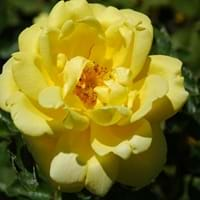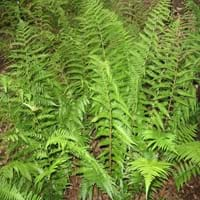Life Span
Perennial
Perennial
Origin
Hybrid origin
United States, Southeastern United States, South-Central United States
Types
Not Available
Not Available
Habitat
gardens, Pastures, Prairies, Terrestrial, Tropical regions
Woodlands
USDA Hardiness Zone
3-8
5-9
Sunset Zone
1a, 1b, 2a, 2b, 3a, 3b, 4, 5, 6, 7, 8, 9, 10, 11, 12, 13, 14, 15, 16, 17, 18, 19, 20, 21, 22, 23, 24
Not Available
Habit
Oval or Rounded
Clump-Forming
Flower Color
Not Available
Not Available
Flower Color Modifier
Not Available
Bicolor
Fruit Color
Non Fruiting Plant
Non Fruiting Plant
Leaf Color in Spring
Not Available
Not Available
Leaf Color in Summer
Not Available
Green
Leaf Color in Fall
Not Available
Green
Leaf Color in Winter
Light Green
Dark Green
Leaf Shape
Pinnate
Toothed
Plant Season
Summer, Fall
Spring, Summer, Fall, Winter
Sunlight
Full Sun, Partial Sun
Full Sun, Partial shade
Type of Soil
Loam, Sand
Loam
The pH of Soil
Acidic, Neutral
Acidic, Neutral
Soil Drainage
Well drained
Average
Bloom Time
Early Summer, Summer, Late Summer, Early Fall
Indeterminate
Tolerances
Drought
Drought, Wet Site
Where to Plant?
Ground, Pot
Container, Ground
How to Plant?
Grafting, Stem Planting, Transplanting
Divison, Spores
Plant Maintenance
Medium
Medium
Watering Requirements
Form a Soil ring to water efficiently, Requires regular watering, Water twice a day in the initial period, Water when soil is dry
Requires a lot of watering, Requires regular watering, Requires watering in the growing season, Water Deeply
In Summer
Lots of watering
Lots of watering
In Spring
Moderate
Moderate
In Winter
Average Water
Average Water
Soil pH
Acidic, Neutral
Acidic, Neutral
Soil Type
Loam, Sand
Loam
Soil Drainage Capacity
Well drained
Average
Sun Exposure
Full Sun, Partial Sun
Full Sun, Partial shade
Pruning
Prune if you want to improve plant shape, Remove damaged leaves, Remove dead leaves, Remove deadheads, Shape and thin as needed
Remove damaged leaves, Remove dead branches, Remove dead leaves
Fertilizers
All-Purpose Liquid Fertilizer, organic fertlizers
All-Purpose Liquid Fertilizer
Pests and Diseases
Aphids, Bacterial Diseases, Mites, Slugs
Red blotch
Plant Tolerance
Drought
Drought
Flower Petal Number
Not Available
Single
Edible Fruit
Not Available
No
Foliage Texture
Not Available
Fine
Foliage Sheen
Not Available
Glossy
Attracts
Not Available
Insects
Allergy
no allergic reactions
Avoid during Pregnancy, coma, Eye irritation, weakness
Aesthetic Uses
Beautification, Bouquets
Beautification, Landscape Designing, Showy Purposes
Beauty Benefits
Not Available
Not Available
Environmental Uses
Air purification
Air purification
Medicinal Uses
No Medicinal Use
Nutrients
Part of Plant Used
Flowers
Leaves
Other Uses
Showy Purposes, Used as Ornamental plant
Air freshner, Decoration Purposes, Employed in herbal medicine, Showy Purposes, Used for its medicinal properties
Used As Indoor Plant
No
Yes
Used As Outdoor Plant
Yes
Yes
Garden Design
Container, Cutflower, Feature Plant, Foundation, Mixed Border
Groundcover, Mixed Border, Rock Garden, Wall
Botanical Name
ROSA 'Allgold'
DRYOPTERIS x australis
Common Name
Floribunda Rose
Wood Fern
In Hindi
रोजा allgold
dixie wood fern
In German
rosa Allgold
dixie wood fern
In French
rosa TousPlaqué
dixie wood fern
In Spanish
rosa allgold
helecho de madera dixie
In Greek
rosa allgold
dixie wood fern
In Portuguese
rosa allgold
dixie samambaia de madeira
In Polish
rosa allgold
dixie wood fern
In Latin
Rosa allgold
Fern Dixie
Phylum
Not Available
Filicinophyta
Class
Not Available
Filicopsida
Family
Rosaceae
Dryopteridaceae
Clade
Angiosperms, Eudicots, Rosids
Not Available
Tribe
Not Available
Not Available
Subfamily
Rosoideae
Not Available
Number of Species
Not Available
Season and Care of Floribunda Rose and Dixie Wood Fern
Season and care of Floribunda Rose and Dixie Wood Fern is important to know. While considering everything about Floribunda Rose and Dixie Wood Fern Care, growing season is an essential factor. Floribunda Rose season is Summer and Fall and Dixie Wood Fern season is Summer and Fall. The type of soil for Floribunda Rose is Loam, Sand and for Dixie Wood Fern is Loam while the PH of soil for Floribunda Rose is Acidic, Neutral and for Dixie Wood Fern is Acidic, Neutral.
Floribunda Rose and Dixie Wood Fern Physical Information
Floribunda Rose and Dixie Wood Fern physical information is very important for comparison. Floribunda Rose height is 60.00 cm and width 90.00 cm whereas Dixie Wood Fern height is 90.00 cm and width 60.00 cm. The color specification of Floribunda Rose and Dixie Wood Fern are as follows:
Floribunda Rose flower color: Not Available
Floribunda Rose leaf color: Not Available
Dixie Wood Fern flower color: Not Available
- Dixie Wood Fern leaf color: Not Available
Care of Floribunda Rose and Dixie Wood Fern
Care of Floribunda Rose and Dixie Wood Fern include pruning, fertilizers, watering etc. Floribunda Rose pruning is done Prune if you want to improve plant shape, Remove damaged leaves, Remove dead leaves, Remove deadheads and Shape and thin as needed and Dixie Wood Fern pruning is done Remove damaged leaves, Remove dead branches and Remove dead leaves. In summer Floribunda Rose needs Lots of watering and in winter, it needs Average Water. Whereas, in summer Dixie Wood Fern needs Lots of watering and in winter, it needs Average Water.





